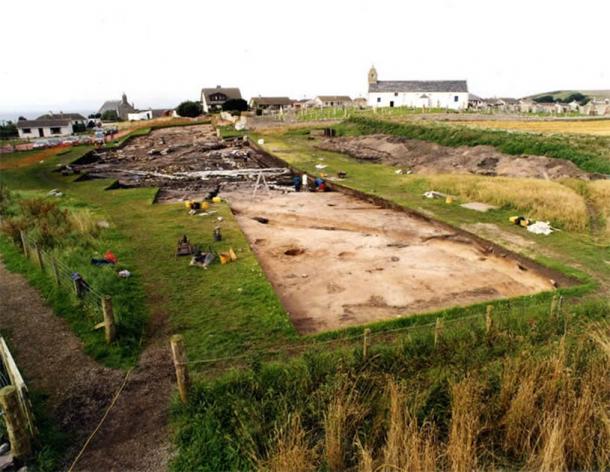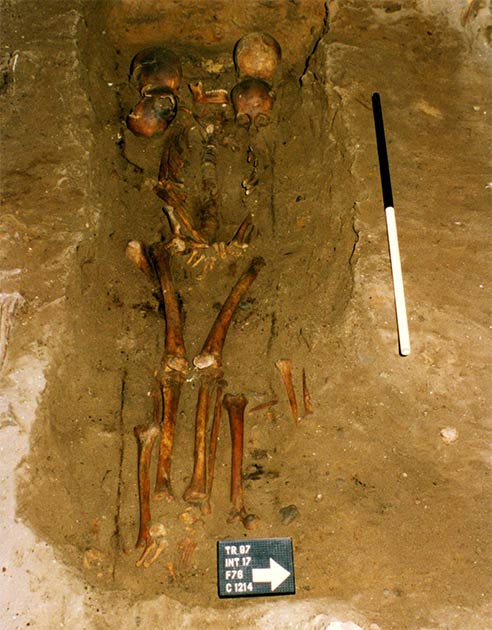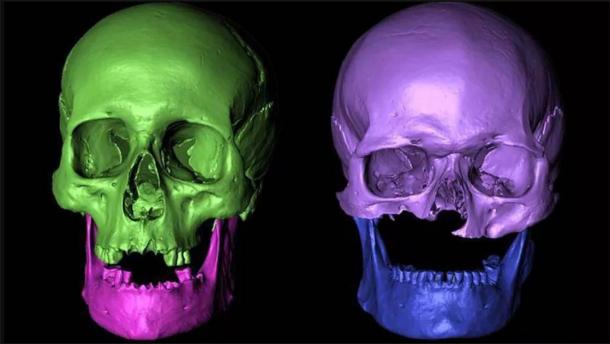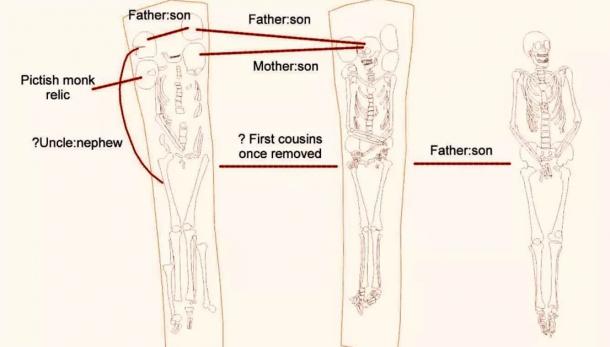
Six-Headed Scottish Burial Is Actually One Genetic Mass
Scientists in Scotland have analyzed DNA samples from a bizarre 14th-century Scottish burial and have made headway in solving the mystery of the “six-headed chief.” Over the last two years, several headlines have been written about discoveries made at the ancient Pictish church of St. Colman, at Portmahomack in north-east Scotland.
Discovered in 1994 and excavated until 2007, this extensive 6th century Pictish monastic settlement, with elaborate symbol stones, pays testament to the sacred nature of this northern spiritual sanctuary. While Roman accounts of the Picts describe war-obsessed savages, all archaeological evidence discovered at this site points towards a highly sophisticated culture which, by the latter half of the first millennium AD, had come to dominate the whole of the north of Scotland.
- Scientists Unravel Mystery of 15th Century Six-Headed Burial
- Picking Apart the Picts: The Value of Aberdeen's Newest Discovery
- Millennium Old Structure Unearthed at Medieval Pictish Fort in Scotland

Excavation area around St Colman’s Church, Portmahomack. (FAS Heritage)
In 1997, at this early place of worship, 88 burials were uncovered dating to between the 13th and 16th century. A 2008 article in The Independent described the discovery of a “six-headed grave,” that according to a report in the Ross-shire Journal was found situated at “the most prominent position in the church – in the center of the nave at the front of the entrance to the medieval crypt.” A BBC report explained that this man was one of two occupants of the grave. The original corpse belonged to a man who had “died violently by the sword and was buried with four further skulls set around his head.”

The six-headed chief was discovered within a medieval Scottish burial. (FAS Heritage)
Resolving The Six-Headed Family Tree
An article in Live Science reports on a recent Historic Environment Scotland project related to this group of special burials which dates back to the time of the warring clans. The project looked at the people associated with the six-headed chief found within the Scottish burial. The chief had died in violent conflict and was buried in the middle the church nave with the skulls of a young woman and three men. His grave was re-opened to bury a second man sometime later, displacing the skull of the first, and together they compose the “six-skulled burial.”

The new results conclude that the remains discovered almost all belong to the same family. (University of Bradford)
Dr. Lisa Brown, archaeological science manager at Historic Environment Scotland said it’s “fantastic” to see isotopic analysis of DNA helping to provide an insight into the relationships between individuals within this complex multi-person Scottish burial. She noted that these methods of analysis were not available back in the 1990s when the primary archaeological excavations first occurred.
An article in National Scotsman explains that the new DNA analysis was undertaken by scientists at the David Reich Lab at Harvard University. The results suggest the full burials and three of the skulls, “represent several generations of one family.”

By conducting a study of DNA analysis of the human remains, the team has deduced that most of the remains belong to members of the same family. (FAS Heritage)
A Very, Very Close Knit Clan
Two of the male skulls were found to be father and son, and in turn grandfather and father of the second man to be buried in the grave. The skull of the young woman was the second man’s mother. It appears that the son of the six-headed chief was buried at his father’s side. The researchers have revealed a number of possible family relationships between the two men who also shared the grave, who are related to one another through the second man’s grandfather.
The 14th century was a violent and war-torn period of history, plagued with famine and the Black Death. Those living during this time experienced great environmental and social destruction, effectively amplifying the Highlander’s tenancy to battle over territories. Calum Thomson, chairman of the Tarbat Historic Trust, is quoted in The Scotsman as saying that “the contemporary skulls had no doubt been conserved or removed from previous graves and the inclusion of the Pictish skull points to the deliberate inclusion of a prized relic.”
This new study of this Scottish burial will add to the 2019 publication of a paper by researchers from the University of Edinburgh’s Usher Institute and MRC Human Genetics unit who also studied DNA samples from Tarbat Ness and presented what was called “the first comprehensive genetic map of Scotland.” What this ground-breaking study shows is that, even after events like the Highland Clearances and the Industrial Revolution, most modern Scottish folk have genetic links with ancient kingdoms and still live in the same areas as their 1000-year-old forefathers did.
Top image: The six-headed chief was discovered within a medieval Scottish burial. Source: FAS Heritage
By Ashley Cowie















